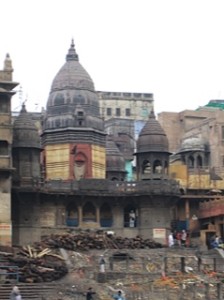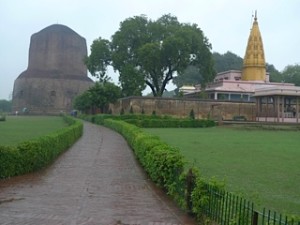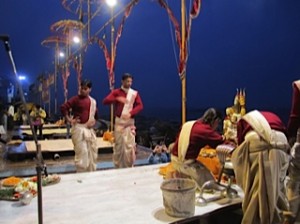A discussion of the interrelations between food, health, and the environment is extremely topical today. In part two of this three part essay we’ll discuss Systems Thinking.
to read part one click here
Systems thinking
The fact that ecological sustainability is a property of a web of relationships means that in order to understand it properly, in order to become ecologically literate, we need to learn how to think in terms of relationships, in terms of interconnections, patterns, context. In science, this type of thinking is known as systemic thinking or “systems thinking.” It is crucial for understanding ecology, because ecology – derived from the Greek word oikos (“household”) – is the science of relationships among the various members of the Earth Household.
Systems thinking emerged from a series of interdisciplinary dialogues among biologists, psychologists, and ecologists, in the 1920s and ’30s. In all these fields, scientists realized that a living system – organism, ecosystem, or social system – is an integrated whole whose properties cannot be reduced to those of smaller parts. The “systemic” properties are properties of the whole, which none of its parts have. So, systems thinking involves a shift of perspective from the parts to the whole. The early systems thinkers coined the phrase, “The whole is more than the sum of its parts.”
What exactly does this mean? In what sense is the whole more than the sum of its parts? The answer is: relationships. All the essential properties of a living system depend on the relationships among the system’s components. Systems thinking means thinking in terms of relationships. Understanding life requires a shift of focus from objects to relationships.
For example, each species in an ecosystem helps to sustain the entire food web. If one species is decimated by some natural catastrophe, the ecosystem will still be resilient if there are other species that can fulfill similar functions. In other words, the stability of an ecosystem depends on its biodiversity, on the complexity of its network of relationships. This is how we can understand stability and resilience by understanding the relationships within the ecosystem.
Understanding relationships is not easy for us, because it is something that goes counter to the traditional scientific enterprise in Western culture. In science, we have been told, things need to be measured and weighed. But relationships cannot be measured and weighed; relationships need to be mapped. So there is another shift: from measuring to mapping.
In biology, a recent dramatic example of this shift happened in the Human Genome Project. Scientists became acutely aware that, in order to understand the functioning of genes it is not enough to know their sequence on the DNA; we need to be able to also map their mutual relationships and interactions.
Now, when you map relationships, you will find certain configurations that occur repeatedly. This is what we call a pattern. Networks, cycles, feedback loops, are examples of patterns of organization that are characteristic of life. Systems thinking involves a shift of perspective from contents to patterns.
I also want to emphasize that mapping relationships and studying patterns is not a quantitative but a qualitative approach. Systems thinking implies a shift from quantity to quality. A pattern is not a list of numbers but a visual image.
The study of relationships concerns not only the relationships among the system’s components, but also those between the system as a whole and surrounding larger systems. Those relationships between the system and its environment are what we mean by context.
For example, the shape of a plant, or the colors of a bird, depend on their environment – on the vegetation, climate, etc. – and also on the evolutionary history of the species, on the historical context. Systems thinking is always contextual thinking. It implies a shift from objective knowledge to contextual knowledge.
Finally, we need to understand that living form is more than a shape, more than a static configuration of components in a whole. There is a continual flow of matter through a living system, while its form is maintained; there is development, and there is evolution. The understanding of living structure is inextricably linked to the understanding of metabolic and developmental processes. So, systems thinking includes a shift of emphasis from structure to process.
All these shifts of emphasis are really just different ways of saying the same thing. Systems thinking means a shift of perception from material objects and structures to the nonmaterial processes and patterns of organization that represent the very essence of life.
This essay is adapted from a speech Fritjof Capra delivered at a professional development institute, “Linking Food, Health, and the Environment,” hosted by the Center for Ecoliteracy and Teachers College Columbia University in the summer of 2008.
http://www.ecoliteracy.org/essays/new-facts-life
 The beautiful Varanasi, India is the holiest of Hindu’s sacred cities. The oldest inhabited city in the world lies beside the sacred River Ganges, nestled between the River Asi, to the south and the River Varuna, to the north. The flourishing city of Varanasi is rich in history and ceremonious traditions. The riverfront plays host to Ghats, which are stone stairways leading to the river; eighty-four of them, in fact. Each of the Ghats is significant in its own way and many travelers take part in freeing themselves from sin by bathing in the sacred river.
The beautiful Varanasi, India is the holiest of Hindu’s sacred cities. The oldest inhabited city in the world lies beside the sacred River Ganges, nestled between the River Asi, to the south and the River Varuna, to the north. The flourishing city of Varanasi is rich in history and ceremonious traditions. The riverfront plays host to Ghats, which are stone stairways leading to the river; eighty-four of them, in fact. Each of the Ghats is significant in its own way and many travelers take part in freeing themselves from sin by bathing in the sacred river. The history and sacred traditions of Varanasi are said to date back as far as 5,000 years. The area is lavished with a variety of religious beliefs; each encompassing their rituals and structures. Buddhism is marked by the Dhamek Stupa shrine, where it is said that the first sermon of Gautama Buddha was given. The followers of the Jain faith claim this area for worship and pilgrimage. Islamic sites are present in the area and date back as far as 1033 CE when the area was invaded and ruled by Muslims. In vast significance, the Hindu temples are effervescent in the area; after several periods of destruction by the Muslims, Varanasi rebuilt the temples, boasting its independence since the 18th century.
The history and sacred traditions of Varanasi are said to date back as far as 5,000 years. The area is lavished with a variety of religious beliefs; each encompassing their rituals and structures. Buddhism is marked by the Dhamek Stupa shrine, where it is said that the first sermon of Gautama Buddha was given. The followers of the Jain faith claim this area for worship and pilgrimage. Islamic sites are present in the area and date back as far as 1033 CE when the area was invaded and ruled by Muslims. In vast significance, the Hindu temples are effervescent in the area; after several periods of destruction by the Muslims, Varanasi rebuilt the temples, boasting its independence since the 18th century.